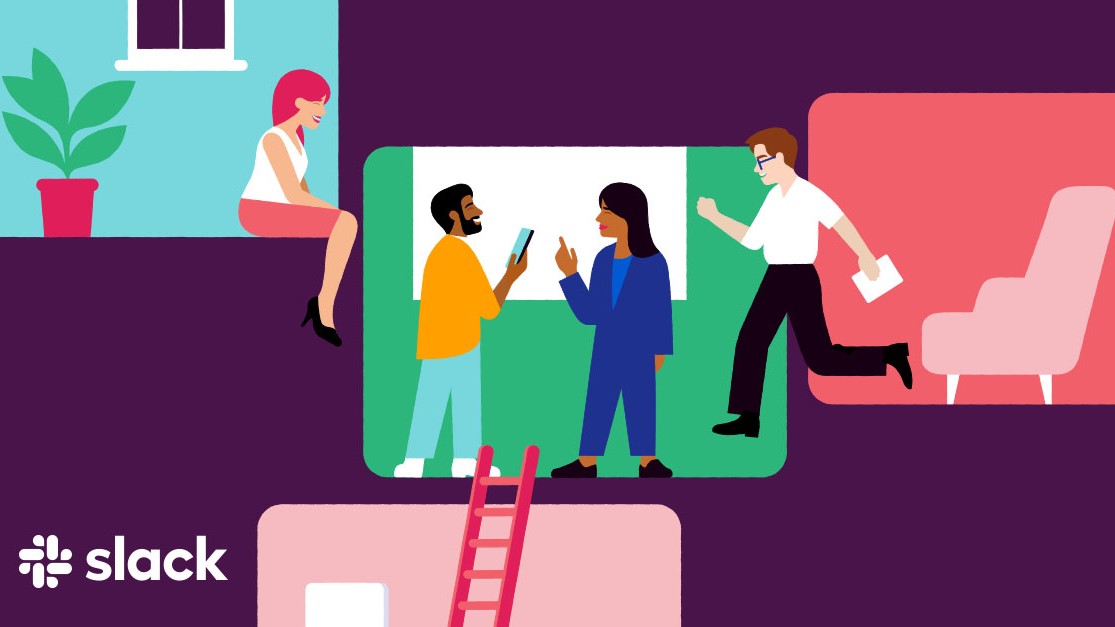Slack still wants to help build your digital HQ
One year on from the Salesforce acquisition, Slack has big plans

It’s fair to say that the last twelve months have been pretty seismic for Slack.
The online collaboration platform, formed only seven years ago, has exploded in popularity as businesses around the world flock to its straightforward interface.
This success led to Slack being bought by CRM giant Salesforce for $27.7 billion, and a year on, TechRadar Pro spoke to Karl Nicholson, Slack’s Director, EMEA Executive Programs, to find out what impact this has had, and will have on the platform’s future.
Salesforce transition
“I think it's been a really great transition,” Nicholson told us at the recent Salesforce World Tour event in London.
“When you look at Salesforce, it is a very competent, established company, and Slack is a new, racy, move fast company. The way that Salesforce has managed that integration between the two companies has been very good, and the thing I really appreciate is that we're learning from one another - so it's not a case of Salesforce consuming Slack in terms of just absorbing it into the ecosystem, but us passing along our best practice of ways of working and also learning a thing or two from Salesforce as well.”
“We're very much leveraging each other's competencies and going to market together, which is partly what the acquisition's all about.”
Slack has revolutionized how co-workers and businesses stay in touch around the world, but the company’s big idea now is to help create a “digital HQ” where Nicholson says that users can enjoy a much closer amalgamation of people, process and technology.
Are you a pro? Subscribe to our newsletter
Sign up to the TechRadar Pro newsletter to get all the top news, opinion, features and guidance your business needs to succeed!
“Ultimately it’s about doing what's right for your business and your company. We have a point of view of Slack in the way that we do things, but ultimately, it really does come down to what you want to do as a business and what's right for your company.”
Going flexible
Flexibility seems to be the watchword, as recent research carried out by Slack’s Future Forum found the majority of workers who have been called back to their offices five days a week are returning reluctantly - with over half (55%) saying they would prefer to work flexibly at least part of the time.
“We've talked about flexibility being key, not only when people work, but also where people work - and I think you need that digital-first approach, that digital HQ approach, to enable that ultra flexibility - digital is the place where you bring everything together,” Nicholson said.
“Slack can be extremely transformative and fundamentally a better more pleasant way of working (but) we don't want to dictate the way that people work ultimately and a digital HQ is not designed to replace in person engagement,” he added. “It's just designed to be a digital-first approach to the way of running your business.”
Another part of this is building what Nicholson calls a “digital workbench” within Slack, allowing for collaboration across files and documents to bring together different platforms and stacks.
“When we think of how work gets done, I think one of the big gaps in the market right now is when we look at tools like Zoom, it's designed for presentations, designed for one person to present to a group,” he notes.
“A gap in the market as we see is creating that kind of digital workbench - having multiple applications open and multiple people collaborating on different documents or images, or whatever, and bringing that all together within a channel-based way of working.”
As an example, Nicholson highlighted recent upgrades to Slack Huddles, its impromptu meeting tool, which now allows the ability to spin up quick video chats (in addition to audio calls), multi-person screen-sharing, emojis and reactions, and message threads that pull through to the associated channel after the call has ended.

It is these kinds of features and additions that Slack hopes can help set it apart, he told us.
“I think we are one of the few products in the industry that is agnostic,” he said, “we're not here to just connect to Salesforce or any other CRM - we really do want to be that engagement layer across the business."
“When you think about all the different applications and different stacks that a company typically has, they are multi-vendor - and so our play has always been that we want to be that engagement layer, we want to be open and we want to make it as simple as possible to do business.”
“We could do too much - however, we're an organization that internally says no to lots of things. So, for every product or every feature that you see ship, there's probably 25 that didn't make the grade, and therefore we didn't deploy them.”
"Simplicity in technology is really difficult, and I feel like Slack is doing a very good job of trying to make things as pleasant simple for our user base as we possibly can.”

Mike Moore is Deputy Editor at TechRadar Pro. He has worked as a B2B and B2C tech journalist for nearly a decade, including at one of the UK's leading national newspapers and fellow Future title ITProPortal, and when he's not keeping track of all the latest enterprise and workplace trends, can most likely be found watching, following or taking part in some kind of sport.